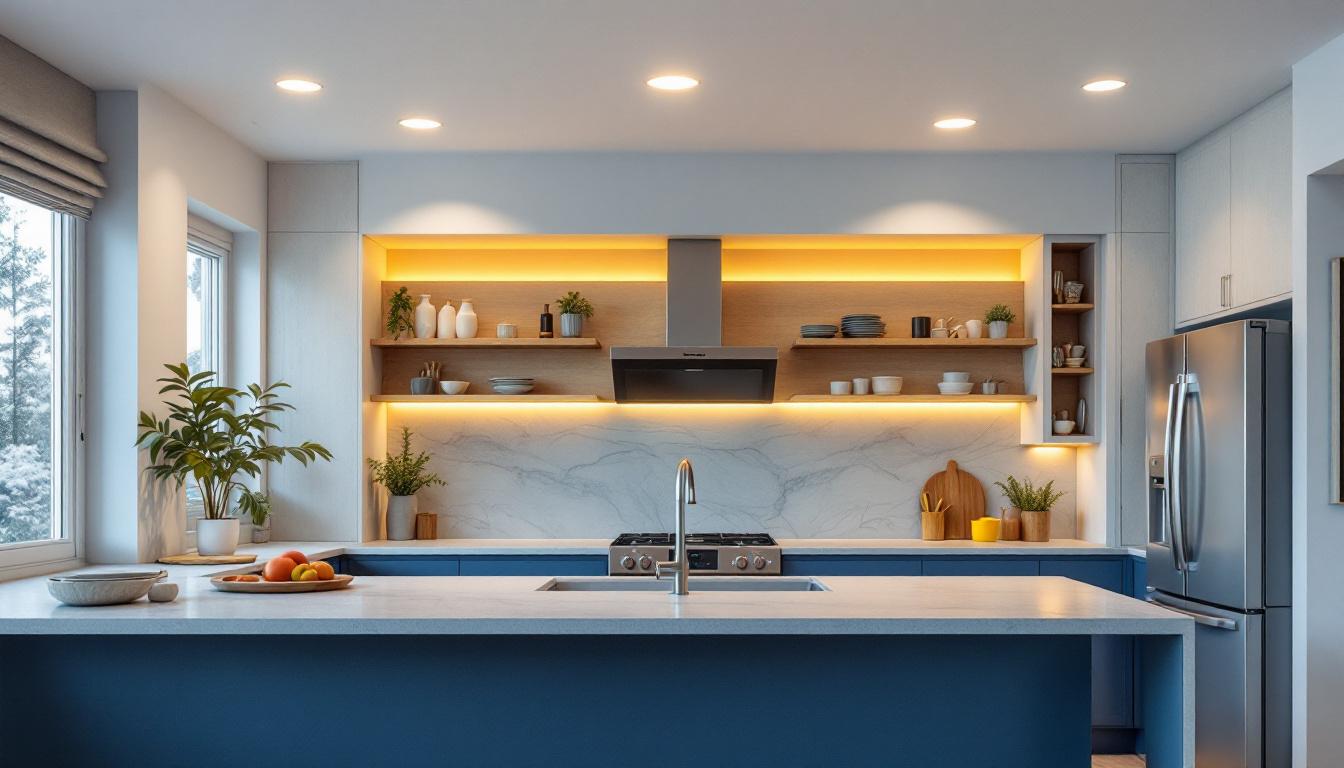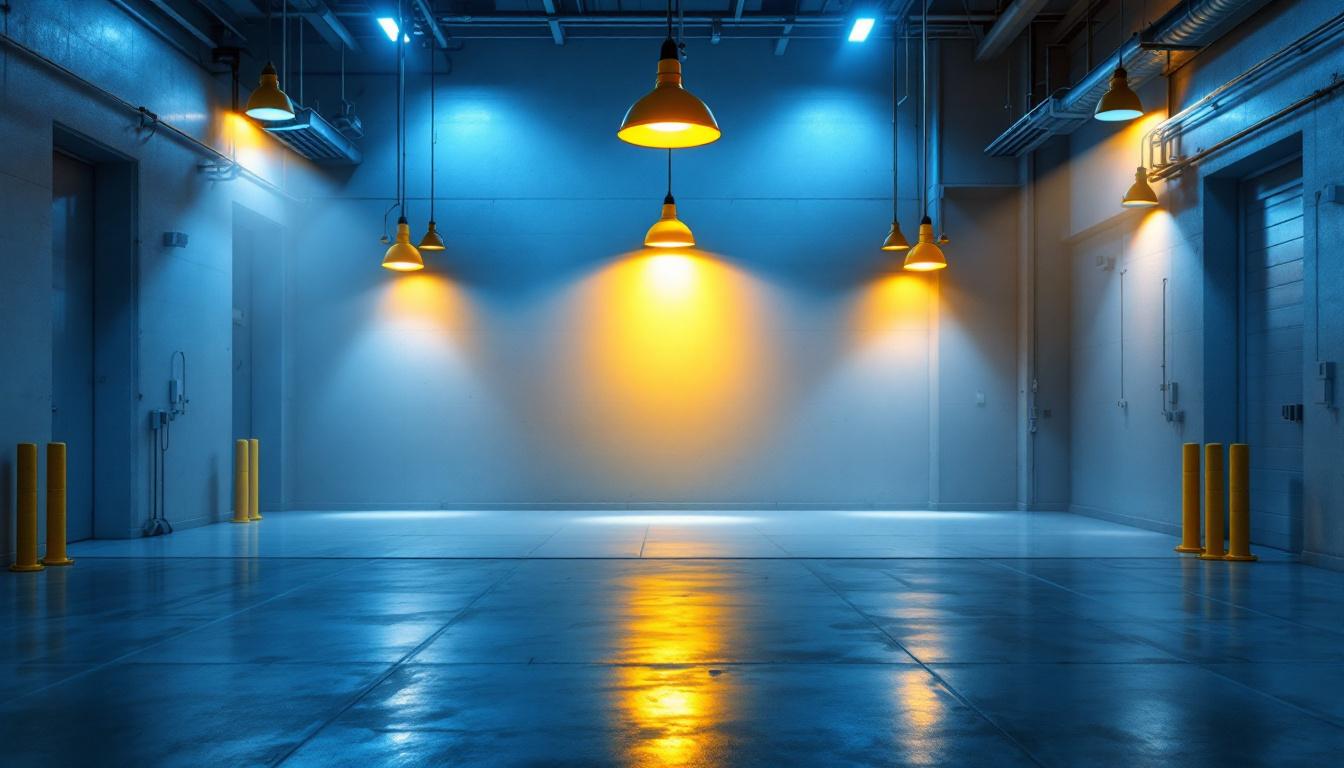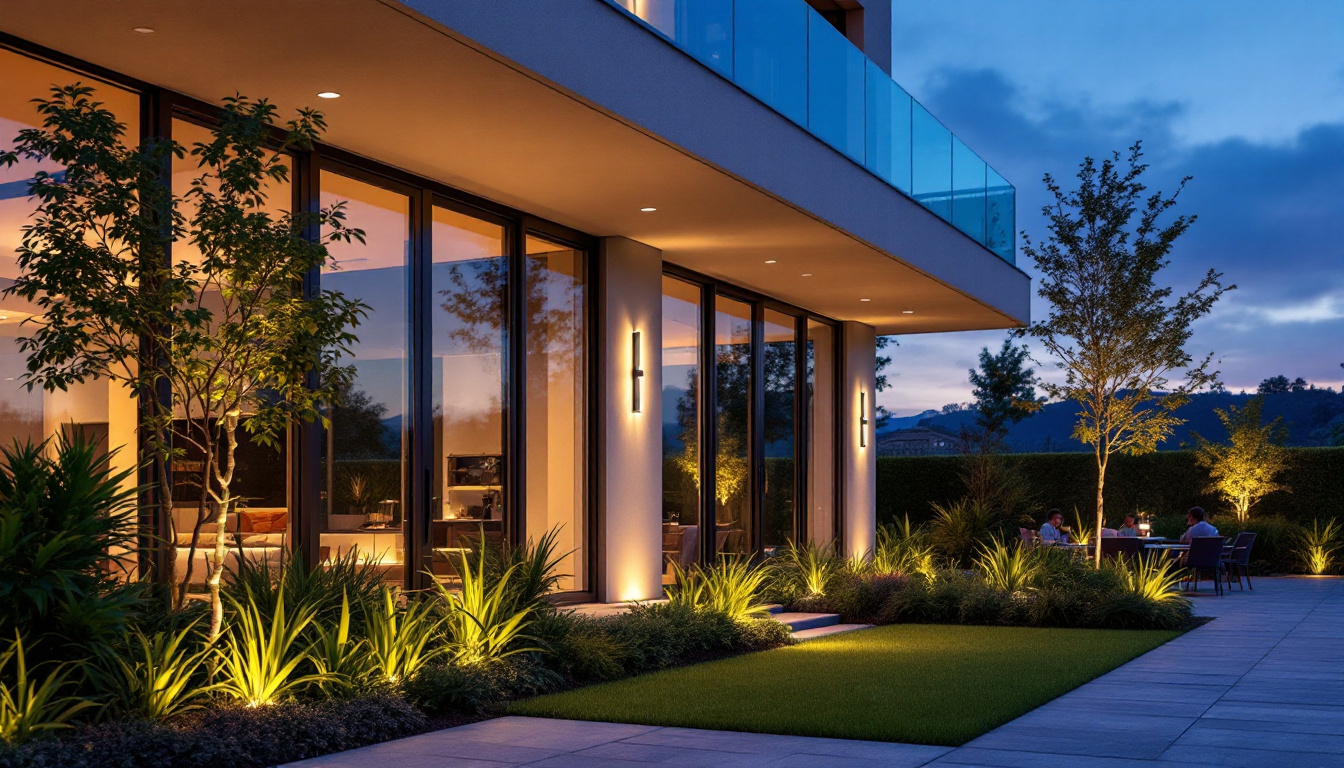
Lighting plays a crucial role in the functionality and aesthetics of a kitchen. Among the various lighting options available, recessed ceiling lights have gained immense popularity due to their sleek design and versatility. This comprehensive guide aims to equip lighting contractors with the essential knowledge needed to effectively incorporate recessed ceiling lights into kitchen designs.
Recessed ceiling lights, often referred to as can lights or pot lights, are fixtures that are installed into the ceiling, creating a clean and unobtrusive look. They are designed to provide ambient, task, or accent lighting, making them an ideal choice for kitchens where multiple lighting needs must be met. The seamless integration of these lights into the ceiling allows for a more spacious feel, as they do not intrude into the visual plane of the room, which is particularly beneficial in smaller kitchen spaces.
These fixtures come in various sizes, shapes, and styles, allowing for customization based on the specific requirements of the kitchen space. Understanding the different components and features of recessed lighting is essential for any lighting contractor aiming to deliver high-quality installations. Additionally, the ability to dim recessed lights can enhance the versatility of the lighting scheme, allowing homeowners to adjust the ambiance according to the time of day or occasion.
Recessed lighting consists of several key components, including the housing, trim, and bulb. The housing is the part that is installed within the ceiling and contains the electrical components. It is crucial to select the appropriate housing type based on the ceiling structure and insulation requirements. For instance, IC-rated housings are necessary for ceilings with insulation, as they prevent overheating and potential fire hazards.
The trim is the visible part of the fixture that can enhance the overall aesthetic. Trims come in various styles, including baffle, reflector, and adjustable options, allowing for flexibility in design. Baffle trims help to reduce glare, making them suitable for general lighting, while reflector trims can enhance brightness, making them ideal for task lighting. Lastly, the bulb type—whether LED, halogen, or incandescent—will affect the light output and energy efficiency of the installation. LEDs, for example, are becoming increasingly popular due to their longevity and lower energy consumption, making them a smart choice for eco-conscious homeowners.
There are several types of recessed lighting that contractors should be aware of when planning a kitchen project. Each type serves a specific purpose and can influence the overall lighting scheme. Understanding these types can help in creating a well-balanced lighting design that caters to the functional and aesthetic needs of the kitchen.
In addition to these primary types, there are also specialty recessed lights designed for specific applications, such as wet-rated fixtures for areas exposed to moisture or low-profile options for ceilings with limited space. The versatility of recessed lighting makes it a popular choice not just in kitchens, but throughout the home, including living rooms, hallways, and bathrooms, where a clean and modern look is desired.
Effective planning is critical when it comes to the layout of recessed ceiling lights in a kitchen. A well-thought-out design can enhance the functionality of the space while creating an inviting atmosphere.
Contractors should consider the kitchen’s dimensions, layout, and existing features when determining the placement of recessed lights. This ensures that the lighting is evenly distributed and meets the specific needs of the space.
When deciding where to place recessed lights, it is essential to consider the height of the ceiling and the size of the fixtures. A general rule of thumb is to space the lights approximately 4 to 6 feet apart, depending on the intensity of the light and the desired effect.
Additionally, it is important to avoid placing lights directly above areas where shadows may be cast, such as over countertops or islands. Instead, positioning the lights slightly off-center can help minimize shadows and provide more even illumination.
In larger kitchens, creating distinct lighting zones can enhance functionality and ambiance. By dividing the space into different areas—such as cooking, prep, and dining zones—contractors can tailor the lighting to suit each zone’s specific needs.
For instance, task lighting can be concentrated over the prep area, while softer ambient lighting can be used in the dining zone. This layered approach to lighting not only improves usability but also adds visual interest to the kitchen.
The choice of bulbs significantly impacts the quality and efficiency of recessed lighting. With advancements in technology, contractors now have a variety of options to consider, each offering distinct advantages.
LED bulbs have become increasingly popular due to their energy efficiency and long lifespan. They produce less heat compared to incandescent bulbs, making them a safer option for kitchen environments. Additionally, LED bulbs are available in various color temperatures, allowing contractors to customize the ambiance of the kitchen.
Color temperature is measured in Kelvin (K) and can greatly influence the mood of a kitchen. Warmer tones (2700K-3000K) create a cozy atmosphere, while cooler tones (3500K-4100K) provide a more modern and vibrant feel.
Brightness is measured in lumens, and selecting the right lumen output is essential for achieving the desired lighting effect. For kitchens, a higher lumen output is generally recommended to ensure adequate illumination for tasks.
Energy efficiency is a crucial consideration for both contractors and clients. Not only does it contribute to lower energy bills, but it also aligns with sustainable building practices. When selecting bulbs, contractors should prioritize options that have a high lumen-to-watt ratio, such as LED bulbs.
Additionally, incorporating dimmer switches can enhance energy efficiency by allowing users to adjust the brightness according to their needs. This flexibility not only improves the functionality of the lighting but also contributes to energy savings.
Proper installation of recessed ceiling lights is essential to ensure safety, functionality, and aesthetic appeal. Contractors must adhere to best practices to achieve optimal results.
Before installation, it is crucial to review local building codes and regulations to ensure compliance. This includes understanding the requirements for electrical connections, insulation, and fire safety.
When making electrical connections, it is vital to use the appropriate gauge wire and ensure that all connections are secure. Contractors should also consider using junction boxes to house connections safely, preventing any potential hazards.
Additionally, it is important to ensure that the circuit can handle the total wattage of all the recessed lights being installed. This will prevent circuit overload and ensure the longevity of the lighting system.
Proper insulation is essential to prevent heat loss and ensure energy efficiency. Contractors should use IC-rated (Insulation Contact) housings when installing recessed lights in insulated ceilings. This allows the fixtures to come into direct contact with insulation without posing a fire hazard.
Ensuring adequate airflow is also critical. Installing recessed lights in a manner that allows for proper ventilation can prevent overheating and prolong the lifespan of the fixtures.
Regular maintenance is essential to ensure the longevity and performance of recessed ceiling lights. Contractors should educate clients on the importance of maintaining their lighting systems to prevent issues down the line.
Common maintenance tasks include cleaning the fixtures, inspecting for any signs of wear or damage, and replacing bulbs as needed. Proper care can enhance the efficiency and appearance of the lighting system.
Despite proper installation and maintenance, issues may arise with recessed lighting. Common problems include flickering lights, dimming, or complete failure of the fixture. Identifying the root cause of these issues is essential for effective troubleshooting.
Flickering lights may indicate a loose connection or an incompatible bulb type, while dimming could be a sign of an overloaded circuit. In cases of complete failure, it may be necessary to check the electrical connections and replace faulty components.
Educating clients about their recessed lighting systems is an important aspect of a contractor’s role. Clients should be informed about the types of bulbs used, how to replace them, and the importance of regular maintenance.
Providing clients with a simple guide or checklist can empower them to take an active role in maintaining their lighting systems, ultimately leading to better performance and satisfaction.
Recessed ceiling lights offer a versatile and stylish lighting solution for kitchens, enhancing both functionality and aesthetics. For lighting contractors, understanding the intricacies of recessed lighting—from planning and installation to maintenance—is essential for delivering high-quality results.
By staying informed about the latest trends, technologies, and best practices, contractors can ensure that their clients receive exceptional lighting solutions that meet their unique needs. With the right knowledge and skills, recessed ceiling lights can transform any kitchen into a beautifully illuminated space.
Ready to elevate your kitchen lighting projects with the finest recessed ceiling lights? At LumenWholesale, we provide lighting contractors with exceptional, spec-grade lighting products at unbeatable wholesale prices. Our commitment to quality and affordability means you can deliver superior lighting solutions to your clients without the burden of inflated costs. With our vast selection that meets rigorous industry standards and the convenience of free shipping on bulk orders, you’re guaranteed to find the perfect lighting for any kitchen design. Don’t compromise on quality or value—Wholesale Lighting at the Best Value is just a click away.

Discover why exterior solar-powered wall lights are becoming essential for lighting contractors.

Discover the top benefits of 2 LED light fixtures for lighting contractors, including energy savings, durability, and cost efficiency.

Discover the key factors that distinguish top lighting contractors in the warehousing industry.

Discover how exterior LED fixtures are revolutionizing the lighting industry with their energy efficiency, durability, and innovative design.